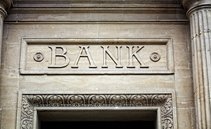Excessive optimism in the markets can lead to a correction in the financial markets. Bank of America highlights 5 crucial indicators to monitor to avoid getting trapped.

Is a Wall Street crash coming? Bank of America issued an alert identifying 5 bearish signals that could anticipate a decline in the stock market. In a climate of excessive optimism, where the S&P 500 index has reached new records at 5,670 points and confidence seems unstoppable, worrying signs are emerging that indicate possible imminent turbulence.
In this article, we analyze the 5 main signals to monitor, offering a critical overview of how these can influence the future direction of the market.
1. All-time market highs
One of the first signs to watch is the stock market reaching all-time highs.
The BofA analyst warns that when indices like the S&P 500 hit new records, it often indicates a phase of euphoria that can precede a decline.
Currently, the S&P 500 has made over 30 new all-time highs this year, recently closing at 5,667. This scenario can signal an overbought market, with stock prices inflated beyond their intrinsic value, making them vulnerable to corrections.

- USA market cap to GDP ratio
- Source: Grufocus
Warren Buffett’s favorite valuation gauge also hit a record high, suggesting stocks may be overvalued. The US stock market capitalization to GDP ratio rose to 197%, approaching November 2021 records.
This means that the value of the stock market, currently at $55 trillion, is about double the annualized US GDP of $27 trillion. In the past, a similar peak preceded a year-long bear market.

- Source: Currentmarketvaluation
2. Historic lows of risk premiums
Another critical indicator is risk premiums, which are currently at historic lows. Risk premiums represent the additional return investors require for holding high-risk assets, such as stocks, compared to risk-free investments such as U.S. Treasuries.

- Source: CNBC, S&P
When these premiums are very low, it means that investors require a lower return to take on risk, which can be a sign of overexposure to risk. In the past, historic lows in risk premiums have often preceded increases in volatility and declines in stock prices, suggesting a possible correction phase.
3. Profits and margins at the maximum
BofA highlights that companies’ profits and margins are already at the highest possible levels. This scenario indicates that there is little room for further improvement, and a possible slowdown in earnings could be imminent. In a market where corporate profits have reached historic highs, any sign of weakness or stagnation could provoke a negative reaction from investors. Peak earnings and margins often precede a market downturn, as there are no longer significant growth drivers to expect and future expectations may not be met.
Also confirming this scenario is Goldman Sachs, which in a recent note showed that the consensus estimates on revenue growth of Amazon, Alphabet, Meta Platforms, Microsoft and Nvidia are expected to slow from 17% year over year in the second quarter to 14% by the fourth quarter.
This trend also occurs on an annual basis.

- Source: Goldman Sachs Global Investment Research
According to Goldman Sachs, analyst revisions of revenue growth were a key indicator signaling the dot-com bubble in 2000. Again, in a context of great enthusiasm for AI, they could represent a useful metric for investors.
leggi anche
Banks: 6 stocks to buy now

4. End of the macroeconomic cycle
The final phase of the macroeconomic cycle is another signal to keep under control. The BofA analyst points out that the US economic recovery appears to be in its late stages. The increase in the unemployment rate, although starting from very low levels, is considered a worrying sign. Historically, whenever the unemployment rate starts to rise, it is a sign that the economic cycle is about to end. Recently, the unemployment rate rose to 4.1%, the highest level since 2021. This increase could suggest an economic slowdown and a possible stock market decline in conjunction with broader economic weakness.

- Source: University of Michigan
5. Increase in unemployment claims
Finally, the increase in initial unemployment claims and the decrease in hiring intentions among small and medium-sized businesses are signs that indicate possible future weakness in the labor market. This year, initial unemployment claims have increased by 15% and hiring intentions of small and medium-sized businesses have decreased. These indicators may suggest an impending contraction in the labor market, which could have negative effects on consumption and, consequently, the stock market.
Final thoughts
In addition to the main signals, Bank of America also mentions declining consumer confidence as a negative leading indicator for consumption. A deterioration in consumer confidence can reduce spending and negatively affect economic growth, adding further downward pressure on the market. With the current 7.7% decline in consumer confidence, as reported by the University of Michigan, and a 3.2% decline month over month, it is clear that consumers are less optimistic about future growth.
|DISCLAIMER
The information and considerations in this article should not be used as the sole or primary basis for making investment decisions. The reader retains full freedom in his own investment choices and full responsibility in making them, since he alone knows his risk propensity and his time horizon. The information contained in the article is provided for informational purposes only and its disclosure does not constitute and should not be considered an offer or solicitation to the public for savings.|
Original article published on Money.it Italy 2024-07-23 16:52:00. Original title: Crollo in arrivo a Wall Street? 5 segnali da monitorare secondo BofA




